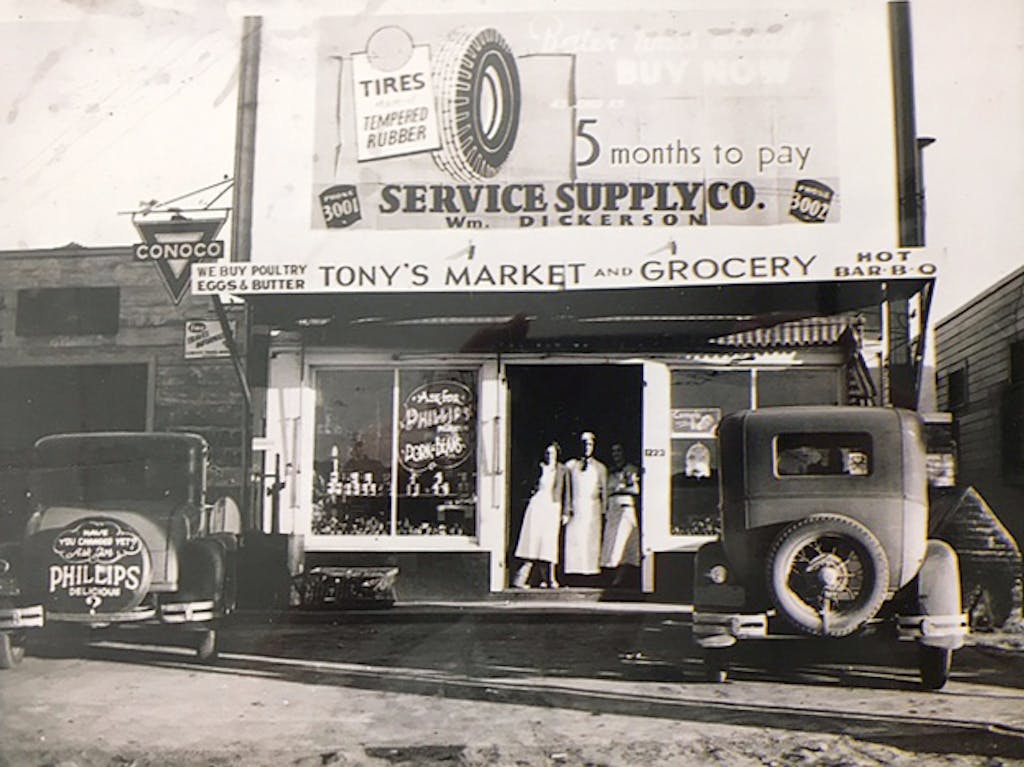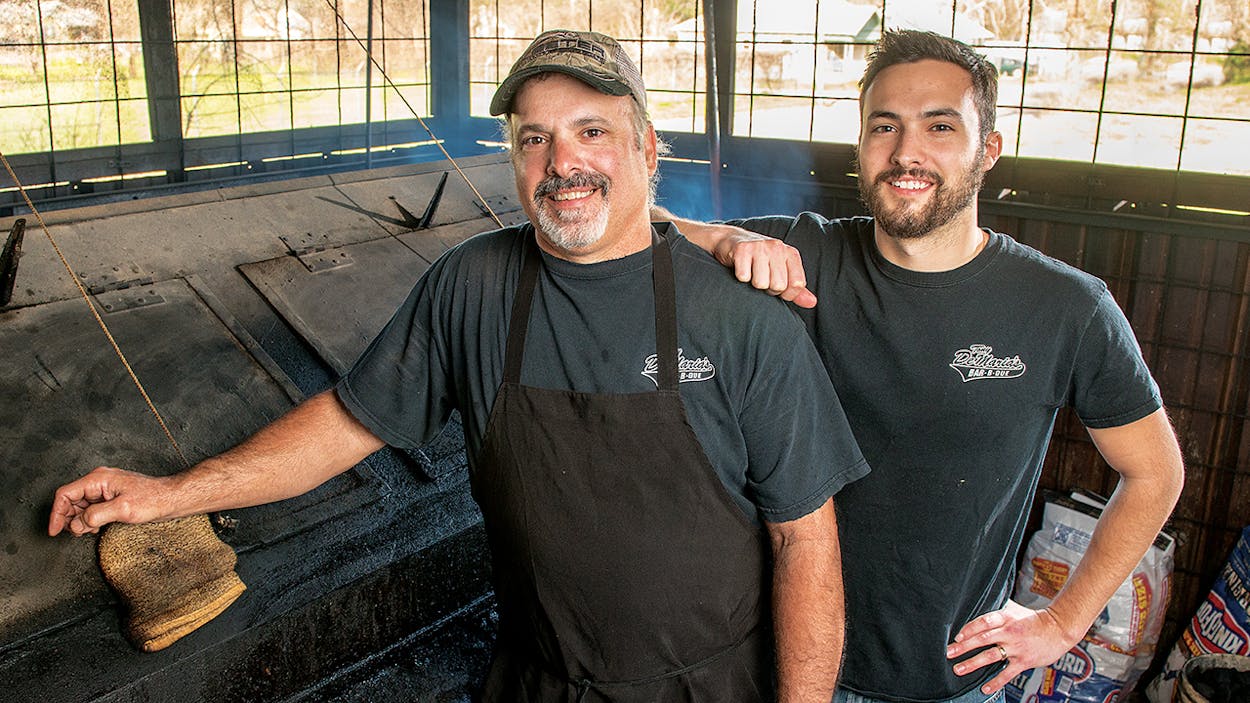In 1891 a transatlantic steamship departed Italy, headed for New York City. It never arrived. The S.S. Utopia, carrying 880 passengers, many of them Italian immigrants who had boarded in Naples and Palermo, was sailing through the port of Gibraltar when it struck another vessel. The hole created by the collision sank the Utopia in just twenty minutes, and 562 people died.
Fortunately for our story, the DiMaria family, citrus farmers from the inland town of Poggioreale, in Sicily, were not on this voyage. They had boarded the Utopia, bound for New Orleans, three years earlier, part of a wave of Italian immigrants fleeing poverty and political unrest (the exodus from Poggioreale alone was so large that the town’s church ceased holding a weekly mass). According to the ship’s passenger list, the DiMarias—Antonino, Vita, and their two children, fourteen-year-old Antonino and eleven-year-old Gaspare—arrived in New Orleans on October 17, 1888, after a monthlong journey in the steerage compartment. They were traveling in a group of nine, carrying a total of six pieces of luggage and possibly boxes of Sicilian lemons to sell when they landed. Along with 796 passengers, the ship also carried oranges, onions, olives, and almonds.
Many of the immigrants stayed in New Orleans; some moved out of town into the swampy land of Plaquemines Parish to find work on sugarcane farms. That’s where the younger Antonino would marry his own Vita (Casciola, in this case) eight years later, shortly after she arrived in New Orleans. They had four sons—Tony, Joe Jr., Gaspare, and Peter—while in Louisiana; eventually they followed Antonino’s parents to Waco, where they had moved in 1902. There they had three more children. Antonino’s brother, Gaspare, took a little longer to make the trek to Texas, but at some point he and his wife, Mary, headed west, making a stop in Angelina County, where Gaspare worked in a lumber mill. (Many of the immigrants from Poggioreale settled in Bryan; in fact, the largest Italian agricultural community in the South at the time was in Brazos County.) By 1916 the couple was in Waco, according to the city directory, which listed Gaspare’s occupation as “bartender.”
The two brothers were finally back together, but now with the Americanized names Joe (Antonino) and Jasper (Gaspare). Their homes sat side by side, and the brothers were almost certainly a comfort to each other. Joe’s wife had passed away in 1910. Three years later their eight-year-old daughter, Vita’s namesake, was killed in a coal oil explosion. Mary was stricken with tuberculosis and forced to live out her final days in a San Antonio hospital.
In Mary’s absence, Jasper put his energy into entrepreneurship. In 1919 he opened a meat market and grocery at 1219 Elm. At some point he began to smoke meat, a humble start for what would become the longest-running barbecue joint in Waco. In 1926 he moved the operation to 105 Clifton; Joe’s son Tony left his job on a truck farm and took over his uncle’s old location with his wife, Josie. They were now in the business too, just a few blocks from Jasper’s. This was considered the outskirts of town back then, and most of their neighbors were also of Italian descent. (Jasper’s Bar-B-Que is still cooking meat at 105 Clifton today, though it’s no longer in the family; Jasper’s son Tony—yes, he had a Tony too—took over when his father died, in 1953, and sold the business in 1990.) In the 1934 Waco directory, “Gasper” (the “G” shows up only in these directories) and his second wife, Lena, are listed as working in “barbecue meats,” the first specific mention of barbecue associated with the DiMaria family name. That same year, Tony and Josie moved their business to 1223 Elm. Tony’s Market and Grocery served “Hot Bar-B-Q” with a side of Phillips Pork & Beans, all likely cooked in a brick pit in the alley next to the store.

Both Tony and his son, Tony Jr. (I know), went off to World War II. When they returned to Waco, in 1946, Tony Jr. opened his own place with his wife, Lillie, at 1317 Elm. It was called Tony DeMaria Jr.’s Food Market, the first official sign that the spelling of the Sicilian last name had morphed at some point in Texas. Jasper’s side of the family kept the DiMaria spelling, but Tony Sr.’s side used DeMaria. According to Tony Jr.’s son Geoff, the current proprietor, Tony DeMaria Jr.’s served barbecue from the start (when he was old enough, Geoff would break down the forequarters for the pit), along with groceries and fresh meat, and the barbecue they were cooking—and that their descendants are still cooking—was unlike any you’d find in Elgin or Lockhart. In what I like to call Waco’s Little Italy, the beef forequarter was butchered and simmered in a vat of beef broth. Once it was tender, it was retrieved from the broth and finished in the smoker, a sort of Texas twist on bollito di manzo. Geoff assumes his dad learned this method of cooking barbecue from his own father; even before Tony Sr. had a storefront, Geoff says, “he used to cook barbecue at the house and serve it out at the auction barn.” Geoff switched to briskets when he took ownership, in 1985, but almost everything else is the same: the brick pit in the smokehouse bears a strong resemblance to the original, if a bit bigger; the sauce is the thin, spicy red-vinegar version the family has always made; and the meat is served with slices of white bread and “gravy” (more like jus). “That’s the way we’ve always done it,” Geoff says. What has changed is where it’s eaten: the barbecue was served to go until construction on Interstate 35 started to bring in large crews of hungry workers. “The shelves moved out and the tables moved in,” he recalls. In 1995 he moved the business to 1000 Elm, the current location of Tony DeMaria’s, got rid of what was left of the groceries, added more tables, and now runs the place with his son Blake by his side.
It’s important to note that there’s a proper way to eat this kind of barbecue. Unlike the brisket you get in Central Texas, which gets its flavor from a heavy rub of salt and pepper, this brisket is adorned by the eater. Take a slice of your white bread, pile some meat on top, add pickles, onions, and that vinegary barbecue sauce, and then dunk the whole thing in the jus, just like a French dip sandwich. With the “Waco dip,” the whole is greater than the sum of its parts. (Incidentally, I’d suggest asking for some of the crustier outside cuts from the brisket.)
This Italian variant of Texas barbecue is a strange one. Boiled and smoked meat isn’t as pretty as its Central Texas counterpart, but it’s also part of our history. The DeMarias’/DiMarias’ barbecue comes from a culinary heritage that has more in common with New Orleans’s legendary Mandina’s than Lockhart’s Kreuz Market. Who knows what the dominant style of Texas barbecue would be today if Italians had arrived in Texas at the same rate as the Germans (there were already 40,000 Germans in Texas by the time the DiMarias arrived). For now, though, we can enjoy their unique contribution in its unadulterated, unaltered form, a barbecue artifact found only in Waco.
- More About:
- Waco









